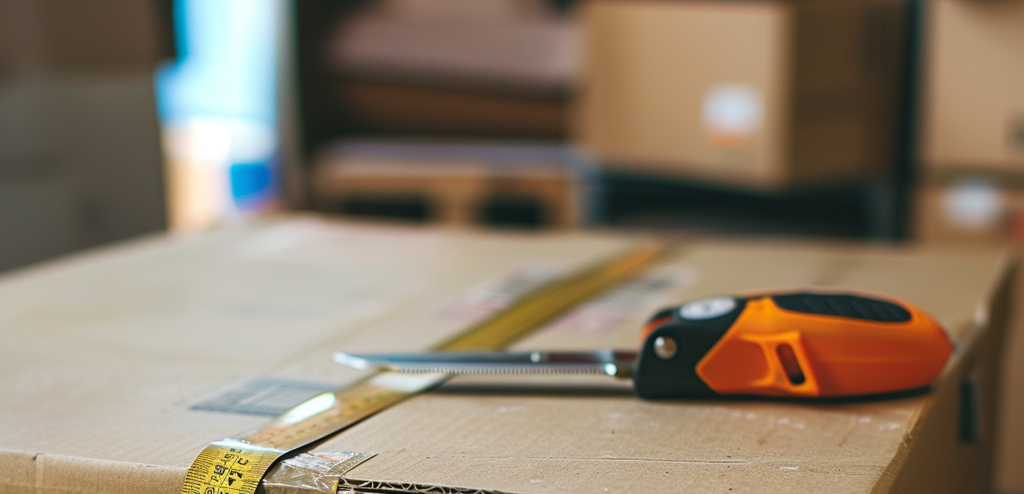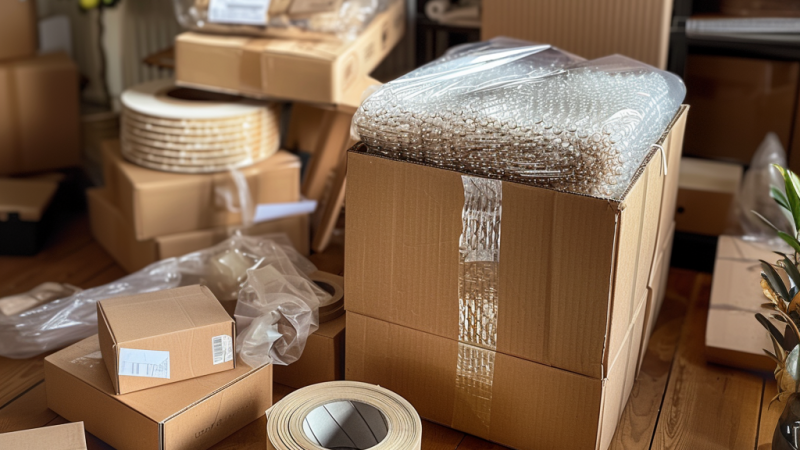When it comes to moving or decluttering your space, self storage units offer a convenient solution to keep your belongings safe and organised. However, to make the most of your storage unit, having the right packing supplies is essential.
This guide to self storage packing supplies will help you choose the right materials, ensure your items are protected, and make your packing process smooth and efficient.
Choose the Right Boxes
The foundation of any packing endeavour is the humble box. There are various types of boxes suited to different needs and selecting the right one is essential.
Standard cardboard boxes are your go to for most items, available in multiple sizes to accommodate household goods, clothing, kitchenware, and more. For heavier items like books, tools, and appliances, heavy duty boxes offer increased durability.
Specialty boxes are designed for specific items: wardrobe boxes for hanging clothes, dish pack boxes with dividers for fragile kitchen items, and file boxes for documents and office supplies.
Choosing the right size is crucial: small boxes are ideal for heavy items like books, medium boxes are great for toys, small appliances, and electronics, while large boxes are best for bulky but lightweight items such as bedding and linens.
Packing Tape
Packing tape is another essential item in your arsenal. Standard packing tape, available in clear or brown, is perfect for sealing boxes.
For heavier boxes, heavy duty packing tape offers stronger adhesion. Masking tape is useful for labelling boxes and short term sealing. To make the process efficient, use a tape dispenser for even application, and reinforce the bottom and top seams of each box with at least two layers of tape.
Protective Materials
Protective materials are indispensable when it comes to safeguarding your items. Bubble wrap is excellent for cushioning fragile items like glassware, ceramics, and electronics, and can also fill empty spaces in boxes to prevent shifting.
Packing paper is versatile and less bulky than bubble wrap, making it ideal for wrapping dishes, glassware, and other fragile items, as well as filling gaps and preventing scratches.
Foam peanuts are great for filling large voids in boxes and providing overall cushioning, especially for oddly shaped items.
For larger pieces of furniture, plastic or fabric covers protect against dust, dirt, and moisture, ensuring your sofas, mattresses, and other large items remain clean and intact.
Labels
Clear labelling is crucial for organised storage. Use self adhesive labels to mark boxes with their contents and the room they belong to, and consider colour coded labels to distinguish between different categories of items.
Permanent markers are essential for writing directly on boxes; choose waterproof markers to ensure labels remain legible even if they get damp.
Blankets
Moving blankets and pads are vital for protecting larger items from scratches and dings during transport.
Wrapping furniture, appliances, and other bulky items in moving blankets will safeguard them from damage.
Stretch wrap is another useful tool for securing bundles of items and protecting furniture. It can hold drawers shut, bundle long items together, and keep dust off upholstered furniture.
Additional Tools
A few additional tools and accessories can make your packing process more efficient. A sharp box cutter is essential for unpacking, allowing you to open boxes quickly without damaging their contents.
A tape measure helps check the dimensions of your storage unit and plan the layout for optimal space utilisation. And you can protect your hands from cuts, scrapes, and blisters with a good pair of work gloves, especially when handling heavy or sharp items.

Inventory and Organisation
Efficient packing involves a bit of planning. Start by creating an inventory of the items you plan to store, which will help you determine the types and quantities of packing supplies you need.
Distribute weight evenly across boxes to avoid making them too heavy, place heavier items at the bottom and lighter items on top, and fill gaps with packing paper or foam peanuts to prevent shifting.
Clearly label each box with its contents and the room it belongs to, which will make it easier to locate items when you need them. Use ample cushioning for fragile items, wrapping each piece individually and placing them snugly in boxes to avoid movement. Finally, maximise your storage unit’s space by stacking boxes carefully, placing heavier boxes at the bottom and lighter ones on top to maintain stability.
Optimal Storage
Having the right self storage packing supplies can make a significant difference in the safety and organisation of your stored items. By investing in quality materials and following the tips outlined in this guide, you’ll ensure your belongings are well protected and easy to access when needed. Happy packing!
If you want to find out more about how we can help you with your self storage needs then why not check out our different self storage units.

